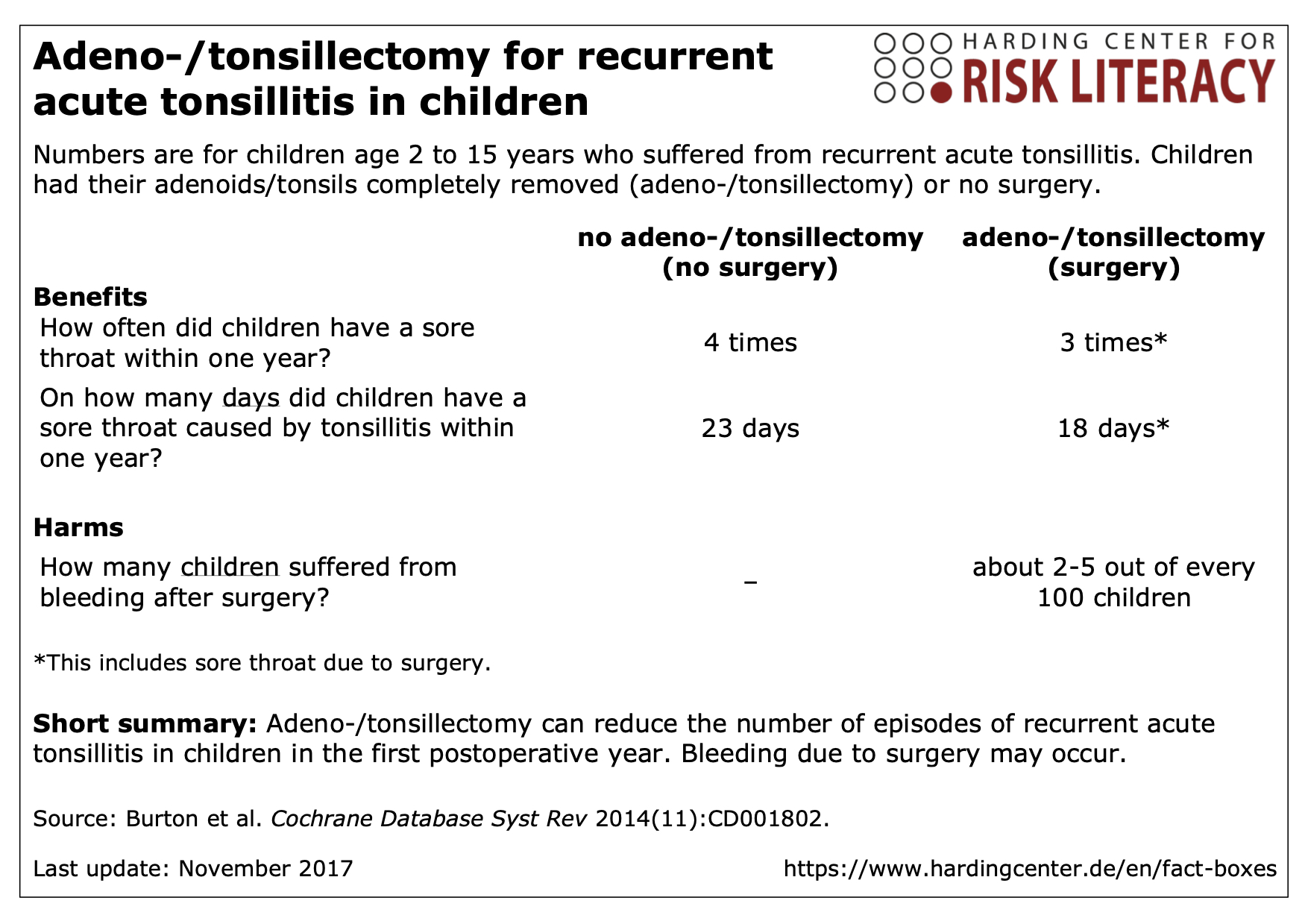This fact box will help you to weigh the benefits and harms of adeno-/tonsillectomy for recurrent acute tonsillitis in children. The information and numbers are based on the best scientific evidence currently available.
This fact box was developed by the Harding Center for Risk Literacy.
Recurrent acute tonsillitis is when acute infection of the tonsils repeatedly occurs. It is caused by bacterial infection, which in the acute stage leads to sore throat, fever, feeling tired, and difficulties breathing and swallowing. Children are most often affected [1]. Symptoms usually get better after a few days without any intervention [2].
A tonsillectomy is an operation to remove the tonsils [1]. When both the tonsils and the adenoids are removed, the operation is called an adenotonsillectomy [2].
Children who suffer from at least six episodes of moderate to severe tonsillitis within one year [1].
Alternatives to surgery are no treatment (watchful waiting) and treatment with antibiotics and painkillers [2].

The fact box shows the benefits and harms of adeno-/tonsillectomy compared to no surgery for recurrent acute tonsillitis in children.
The table may be read as follows:
Children who had an adeno-/tonsillectomy had a sore throat on average 3 times within one year. Children who did not have surgery had a sore throat 4 times in the same time period.
The numbers in the fact box are rounded. The data were reported in 5 studies with about 987 participants [2].
Overall, the evidence is of low to moderate quality: Further research is likely to have an important impact on some findings (where the quality of evidence is moderate) and very likely to affect other findings (where the quality of evidence is low) [2].
- November 2017 (last update)
Information within the fact box was obtained from the following sources:
[1] Windfuhr JP. Indications for tonsillectomy stratified by the level of evidence. GMS Current Topics in Otorhinolaryngology, Head and Neck Surgery 2016;15:Doc09. doi: 10.3205/cto000136
[2] Burton MJ, Glasziou PP, Chong LY, et al. Tonsillectomy or adenotonsillectomy versus non-surgical treatment for chronic/recurrent acute tonsillitis. Cochrane Database Syst Rev2014(11):CD001802. doi: 10.1002/14651858.CD001802.pub3
Documentation on how the numbers in the fact box were determined is available on request.
